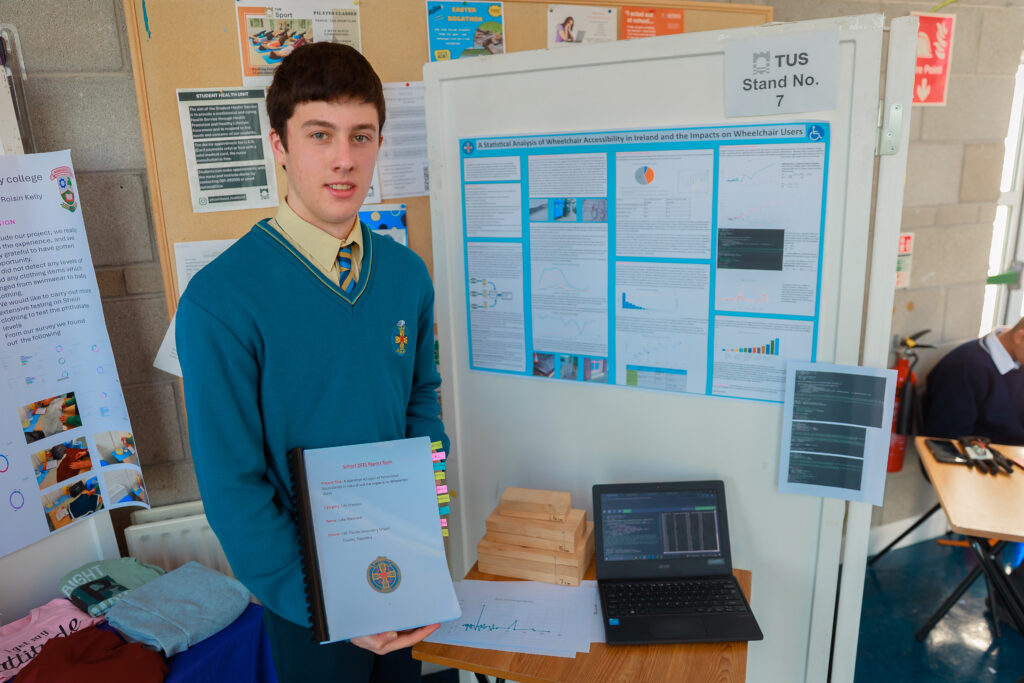Junior Cert students can now place themselves right in the heart of the World War One battlefield thanks to a virtual reality project which wowed judges at the TUS Moylish Scifest.
Zack Bannon Griffin and Luke O’Loughlin Byrne from Ardscoil Rís Secondary School won the regional heat of the contest thanks to their entry, ‘The Archive – Using VR to assist in Junior Cycle study’.
This project intends to aid those studying the Junior Cert by using virtual reality –and placing the user in several scenes of history and allowing them to experience these events.
For the project, they looked at World War One as their subject matter using the Godot game engine and the GDScript coding language.
Describing their project, the students wrote: “To create the scenes of history we will be taking models off a website called Sketchfab and putting them together in a scene using a program called Blender. We are using an AI narrator to narrate these scenes so we don’t have to hire voice actors.”

TUS Moylish Scifest co-ordinator Dr Pauline Ryan said: “Every year I am so impressed by the high standard of research that goes into the entries; this year is no different.
“The quality of the research being done by the second-level students from across the region highlights the passion the students have for science, technology, engineering and maths.
“We are so proud to take part in SciFest, as it not only encourages the students to learn more about STEM but is all inclusive.”
Access issues for wheelchair users were investigated by the winner of the TUS Thurles Scifest 2025 competition
Luke Blackwell from Thurles CBS won the regional heat of the contest with his project titled A Statistical Analysis of Wheelchair Accessibility in Ireland and an Investigation into the Impact on Wheelchair Users’.

Luke said: “Accessibility is a major problem for wheelchair users in Ireland who encounter many obstacles trying to access services everywhere.
“Many problems are related to town planning, including lack of ramps/wheelchair parking, narrow paths, steps and uneven surfaces.
“Many towns have old buildings that historically weren’t accessible and remain the same today.
“My objective was to find the most accessible town – and the reasons for this.
“I produced a detailed assessment of the accessibility issues of 13 towns to influence future town planning and to raise public awareness. In addition to this, I am now working on establishing relationships between the data and creating mathematical descriptions.”
Martin McCormack, organiser of TUS Thurles Scifest, paid tribute to Luke and his teacher, Danielle Slattery, for her guidance, and said: “The standard of the projects was excellent and it was wonderful to see the work of young students and their science teachers being shown to such good effect.”
Winners from each regional STEM fair go on to compete at a national final in November.
Winners from the national final compete at the Regeneron International Science and Engineering Fair in America and attend the Long Night of Science in Berlin.
SciFest is funded primarily by the Department of Education, Research Ireland, Intel Ireland, Boston Scientific, EirGrid and Mallinckrodt Pharmaceuticals.
Sheila Porter, SciFest Founder and CEO, said: “SciFest is more than just a STEM fair: it is a launchpad for young innovators, equipping second-level students with the confidence, skills, and curiosity to tackle real-world challenges. By engaging in hands-on research, collaborating with mentors, and connecting with like-minded peers, participants gain invaluable experience that extends far beyond the competition.
“With over 15,000 students taking part each year and participation continuing to grow, SciFest is shaping the future of STEM education and innovation. This incredible momentum is driven by the unwavering dedication of teachers, mentors, parents, third-level coordinators, and our valued partners and sponsors.
“Their commitment ensures that every student, regardless of background, gender, ability or circumstance has the opportunity to explore, discover, and innovate. We are deeply grateful for their support in inspiring the next generation of changemakers.”



